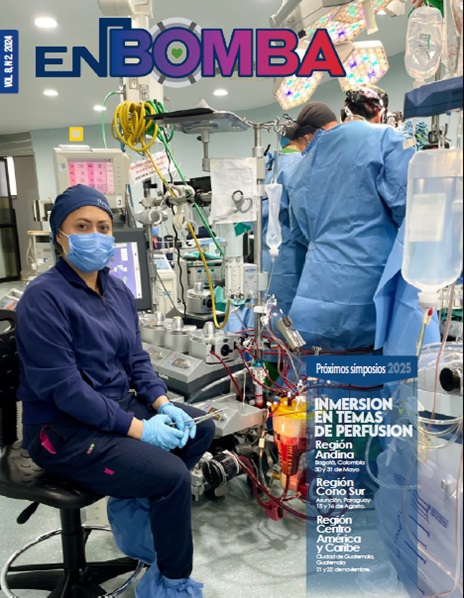Resucitación cardiopulmonar extracorpórea, extrahospitalaria. Existe una justificación racional para su uso.
Palabras clave:
ECMO, ECPRResumen
Han transcurrido 52 años desde que el Dr. J. Donald Hill usó por primera vez en la historia un oxigenador de membrana, para asistir respiratoriamente a un paciente que había sufrido un trauma torácico y casi 50 desde que el Dr. Robert Bartlett hiciera lo mismo en un paciente neonatal. Todo esto permitió que rápidamente el ECMO encontrara otro campo de aplicación en los pacientes con parada cardiorrespiratoria refractaria, como mecanismo para restaurar la circulación y mantener la entrega de oxígeno a los tejidos. No existe un consenso claro del momento en que se debe iniciar cambiar de una RCP convencional a una RCPC. Si decidimos iniciarla de forma prematura cabe la posibilidad de que el paciente hubiera regresado a la circulación espontánea (ROSC) sin la necesidad de ECPR. Pero si demoramos mucho en iniciarla tendríamos un tiempo de bajo flujo demasiado prolongado con consecuencias poco favorables para el paciente. Con el conocimiento de que disponemos en estos momentos, entendemos que la ECPR extrahospitalaria no ha demostrado ser superior que las maniobras de RCP convencionales durante la parada cardiorrespiratoria presenciada. Para lograr estos resultados el equipo canulador debe estar entrenado y se debe garantizar la continuidad de las maniobras de RCP hasta el inicio de la ECPR. Las guías de la ELSO establecen un tiempo razonable de 20 min antes de iniciar la ECPR sin embargo la evidencia que tenemos proviene de pacientes en los que se ha iniciado tempranamente a los 15 min. El tiempo máximo del que disponemos antes de iniciar un ECPR según la ELSO es de 60 min y en realidad esto es muy razonable, a causa de los pobres resultados neurológicos obtenidos con tiempos más prolongados.
Descargas
Publicado
Cómo citar
Número
Sección
Licencia
Derechos de autor 2024 Alexei Suárez Rivero

Esta obra está bajo una licencia internacional Creative Commons Atribución-NoComercial 4.0.
Los trabajos admitidos para publicación quedan en propiedad de los autores y su reproducción total o parcial está autorizada siempre y cuando se haga referencia a la fuente primaria y no se persigan fines comerciales (Licencia CC Reconocimiento-NoComercial 4.0). La Revista En bomba se reserva el derecho de reproducir (parcial o totalmente) sus publicaciones así reproducir sus contenidos en otros medios o soportes digitales o físicos.








